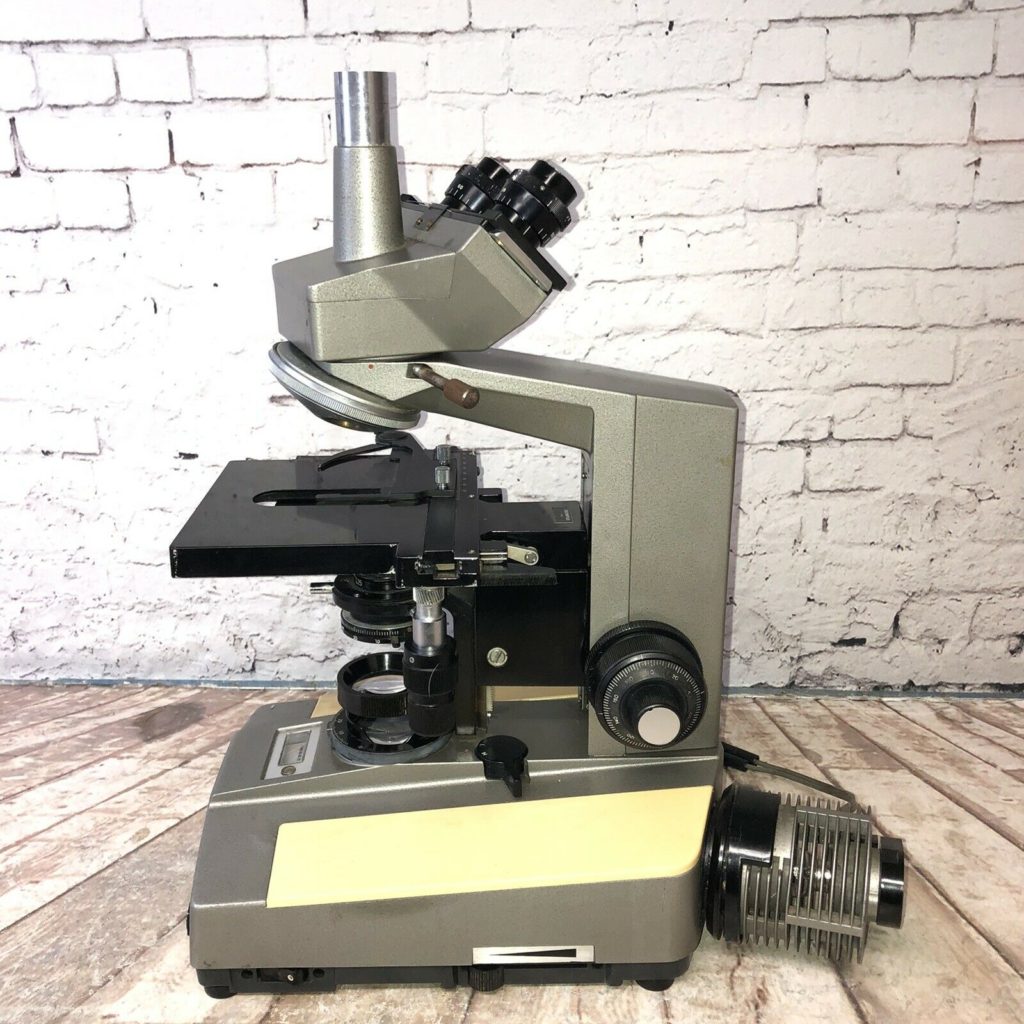So, what to do when work goes a bit quiet because of what’s going on with Covid-19? Learn a new skill of course. Given my interest in all things imaging, it is perhaps surprising that I have very little experience with optical microscopy. In previous jobs and projects there were always microscopy experts as part of the team, and I used to look on in awe when they’d create these amazing images.
A few days ago I thought it was time to jump into the world of optical microscopy, learn something new, and perhaps put together a system which I can use for UV imaging at the same time. Instead of buying a new, ‘plastic fantastic’ microscope, I decided to get an older one which would hopefully be simpler to work on. As I found out though, older microscopes still command quite high prices, presumably because they were so well made. After a quick search on eBay, I found an Olympus BHB from the 1970’s, with no lenses, and advertised as ‘not working’. The price however was low, so I contacted the vendor and we agreed on an even lower price. So begins the journey of discovery I’m calling ‘Project Beater’, and the name will become obvious later…..

Surely, if it’s not perfect now, how hard can it be to get running again……. Oh, how ignorance is bliss.
The microscope arrived yesterday, well packaged, and pretty much as shown in the pictures in the advert (one of which is above). Once unwrapped, and on the bench, the areas that needed working on started to become apparent, and then more things became apparent, and more, and more. The snag list so far stands at;
- There are no eyepiece lenses. This was mentioned in the advert, so some old 10x ones are on order.
- There are no objective lenses. Again this was in the advert, and isn’t a problem, as I have a few on order. Given my interest in UV imaging, I wanted to source some very specific objectives anyway, so this was actually a benefit as I wasn’t buying ones I didn’t need.
- The light source bulb has blown, so a new one will be sourced. Also, the cable for the light source has been modified to run from an external power supply, rather than the one in the microscope itself. So I need to either get an original plug for the cable, or just run it from an external power source. I’d like to get an LED source up and running for this at some point anyway, so this isn’t a huge issue.
- The light path selector in the observation tube was stuck, and wouldn’t slide freely. This has been fixed now after loosening off the mounting screws, and a bit of jiggling, as there was something blocking it.
- The high/low magnification light source selector was stuck, as the grease used in it had gone very sticky. All these bits are now out ready to be cleaned.
- The field iris diaphragm adjustment ring is extremely stiff. I haven’t figured out how to get this out yet to loosen it off (this could be tricky).
- While it has a trinocular head, I have no way of attaching a camera yet, although I have some ideas for that.
- Overall, it is filthy and in places some of the metal in the body is quite corroded. I get the feeling this has been dumped in the back of a cupboard for 20+ years, and has been generally neglected. So an overall clean and lube is needed.
Welcome to Project Beater, and given the snag list above, the name now becomes obvious. I hope over time to get this up and running again into a usable microscope. However if not, there is a fall back option. The focus block would make a good macro photography focus rail, so if the microscope proves to be beyond resurrection, the hacksaw will be coming out, and it’ll get cut up and reused. In the current climate where reuse and recycle are becoming more and more important, just trashing this is not an option.
Why bother doing this? Why not just buy a new microscope? Other than the obvious of not going with a new deice, these are valid questions. One of the reasons for me was to get something that required a bit of work, to get me to learn something new, as it’s only by learning how something works that you can figure out their limitations and where things can be improved. If I can get it working again even better.
At this point I would like to give a quick shout out (that’s such a corporate phrase) to Best Scientific in Wiltshire, UK. They didn’t supply me with the microscope itself, but they have been great regarding getting hold of the objectives I was after, and in general advice on all things microscopy.
If you’d like to know more about any aspect of my work on imaging and skin, you can reach me here.
